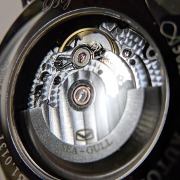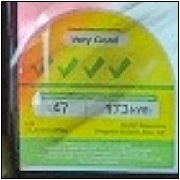|
A 2080ti can saturate a 3.0x8 link, nothing else comes close. The 3.0x8 thing doesn't even matter, because you'd be on something with 48 3.0 lanes for the slots at current gen of HEDT parts, and couldn't saturate all of them even with 4x 2080ti's. Basically when you get to the point where pcie bandwidth limitations matter you're already $7000 deep into a PC.
|
|
|
|

|
| # ? Apr 16, 2024 16:26 |
|
What's the best power supply nowadays? I have a Seasonic focus+ gold right now but I'm wondering if there's something more popular. I have no complaints with it, just thinking about another PC build.
|
|
|
|
Looking to replace my 10 year old i7 920 build that I re purposed two years ago to be a Plex server. I could go the route of being in a NAS, but I like building things. Here's where I'm at: PCPartPicker Part List CPU: Intel Core i3-9100F 3.6 GHz Quad-Core Processor ($86.89 @ B&H) CPU Cooler: Noctua NH-L9i chromax.black 33.84 CFM CPU Cooler ($49.95 @ Amazon) Motherboard: ASRock Z390M-ITX/ac Mini ITX LGA1151 Motherboard ($134.99 @ Amazon) Memory: Corsair Vengeance LPX 16 GB (2 x 8 GB) DDR4-3000 Memory ($76.25 @ Amazon) Storage: Samsung 970 Evo 500 GB M.2-2280 NVME Solid State Drive ($89.99 @ Amazon) Case: Fractal Design Node 304 Mini ITX Tower Case ($79.98 @ Amazon) Power Supply: EVGA SuperNOVA GM 450 W 80+ Gold Certified Fully Modular SFX Power Supply ($79.98 @ Amazon) External Storage: Western Digital ELEMENTS 8 TB External Hard Drive ($124.99 @ Amazon) External Storage: Western Digital ELEMENTS 8 TB External Hard Drive ($124.99 @ Amazon) Total: $848.01 Some notes: - I'll be shucking the external HDDs to bring them internal - might even get a third to run Raid 5 and/or bump them up to 10tb or 12tb. Either way, I don't need a HUGE amount of storage. - I have a leftover EVGA 1050 TI SSC from my old build that I'll be throwing in this case to do GPU hardware encoding (hence the 9100F - no integrated graphic). - I could probably go with slower RAM or a CPU but I'm not looking to cut costs extensively. - This plex streams mostly locally for myself, my wife and then remotely for just my close family. This won't have to handled dozens of concurrent streams or anything. What do we think?
|
|
|
|
Mu Zeta posted:What's the best power supply nowadays? I have a Seasonic focus+ gold right now but I'm wondering if there's something more popular. I have no complaints with it, just thinking about another PC build. Seasonic Prime Titanium line if money is no object, although anything Titanium rated at the moment should have very high quality components. Many of these run fanless up to their rated capacity because of the extremely high efficiency. Corsair's SF PSUs are also quite good in all aspects and can save room even in an ATX case. I'd reuse what you have unless it is getting very old.
|
|
|
|
Mu Zeta posted:What's the best power supply nowadays? I have a Seasonic focus+ gold right now but I'm wondering if there's something more popular. I have no complaints with it, just thinking about another PC build. I always recommend and use nothing but Seasonics. Most of the best 'big name' PSUs are rebadged Seasonics, so why not buy from them directly?
|
|
|
|
Can't post a new thread from the app, but I can at least write it up and do it when I get home. Mind you, I dont see a reason not to liberally reuse most of the existing op. Welcome to the PC Building and Parts Picking Megathread! This is where we talk about computers, computer parts, and building parts into computers (FYI). Thanks to Crackbone, ShaneB Factory Factory, and Peak Debt for their stewardship for past years of the thread. There is are a lot of parts to choose from and even more bad advice out there for people looking to get a new computer or upgrade their existing ones. This thread is a handbook for you, so that you can get a good system and have a good idea of why it’s a good system. The most common reason people come to this thread is to build a new PC for gaming, but you may have also come here for a home desktop, a workstation for professional use, a home theater PC, a storage server, or just some advice on a new computer for your parents. Read this first! Read the OPs! They aren’t that long, and they should cover a lot of the questions you may have. When you post, tell us the following:
Use PC Part Picker. It lets you piece together a system and copy-and-paste your parts list in BBcode markup. Use it. It will also prevent you from making some (but not all) bonehead moves, like getting a case too small for your motherboard. Please let us know if you happen to live near a Microcenter as well, they often have the best deals among PC retailers but it's all in-store only. -- How much you should expect to spend A basic web and office PC can be had for between $300 and $450, depending on just how basic you need it to be. A basic gaming system can be had for between $600 and $800. A high-end gaming system, you can expect to pay between $1000 and $1500 before we start calling your choices a smidge excessive. On a workstation, if you’re making money with it, we’ll recommend whatever it takes to get the job done quickly, up to your budget. Our recommendation may vary greatly depending on your particular use, e.g. a Solidworks workstation will have very different priorities than a virtualization testbed. If you have never put together a system before, don't worry. It’s easier to put a PC together than the average piece of Ikea furniture. Enough parts come with manuals to tell you what goes where, and you can accomplish everything with very few tools. Usually, you just need a Phillips-head screwdriver and your hands. Hardware Comparison Tools Want to compare your new X to your old Y? AnandTech's Bench database will compare CPUs, GPUs, and SSDs head to head on various real-world and synthetic benchmarks. There are also tools for laptops, phone and tablet benchmarks, Macs, cases, and CPU coolers, though these databases are much less complete.
|
|
|
|
Question about the Aquaero, I have 2 pumps but the Aquaero only has 1 rpm plug, how can I get 2 rpm readings? Something like an LCD inline flow meter with pump rpm readout would be ideal.
|
|
|
|
Typing this on a phone is getting to be a pain, I'll finish when I get home.peak debt posted:COMMON QUESTIONS AND GUIDELINES - READ THESE
|
|
|
|
I want to replace my mid tower with a new mini-itx for gaming CPU: AMD Ryzen 5 3600 3.6 GHz 6-Core Processor ($194.00 @ Amazon) Motherboard: MSI B450I GAMING PLUS AC Mini ITX AM4 Motherboard ($119.99 @ Amazon) Memory: Crucial Ballistix Sport LT 32 GB (2 x 16 GB) DDR4-3200 Memory ($140.99 @ Amazon) Storage: Samsung 970 Evo 1 TB M.2-2280 NVME Solid State Drive ($169.99 @ Amazon) Video Card: MSI GeForce RTX 2060 SUPER 8 GB GAMING X Video Card ($0 waiting for it to arrive in mail) Case: Thermaltake Core V1 Mini ITX Desktop Case ($45.98 @ Newegg) Power Supply: EVGA SuperNOVA G3 850 W 80+ Gold Certified Fully Modular ATX Power Supply ($0 already own it, i think it should fit in a mini-itx case? its only 150mm tall and this case has max 200mm depth for psu) open to liquid cooling if for some reason clearance will not permit use of a fan OBAMNA PHONE fucked around with this message at 21:13 on Nov 11, 2019 |
|
|
|
You might have an easier time fitting liquid cooling solutions in something like an NZXT H210, if the space you have in mind permits a case of that size.
|
|
|
|
Just have to make sure the bios is updated You should be able to fit a noctua 14s in there Mu Zeta fucked around with this message at 21:14 on Nov 11, 2019 |
|
|
|
The Core V1 has quite a lot of clearance and airflow, so you definitely don't need liquid cooling (especially not for a 3600!) It has good clearance for dual-slot gpus, but wider or taller cards (like the MSI Gaming X) won't fit. I'd return it and get a EVGA XC Gaming instead. GPU cooling should be totally fine - I have a EVGA SC2 1080 Ti in my restricted-airflow Core V1 variant and it rarely goes over 75. Your G3 will also work fine! I'm not sure if this has already been suggested, but consider swapping out the 970 evo for an Inland Premium or HP ex920. There's no noticeable performance difference and you could put the $55-65 towards a gpu or monitor upgrade down the road. E: Like Mu Zeta said, the bios is not guaranteed to be compatible out of the box. You'll either need to buy from a shop that will update the bios (like Microcenter), get it updated at a local shop (potentially expensive), or get an upgrade loaner cpu from AMD or someone else. If you're monitor is higher resolution and/or 60Hz, a 2600 would likely have identical gaming performance to the 3600 for now. You could save a bit of money, have guaranteed compatibility, and upgrade in a few years when you'd actually see a difference! Mu Zeta posted:Just have to make sure the bios is updated The Core V1/Suppressor F1 only has 140mm of CPU clearance, so no d15(s)/u14s/u12s or Mugen 5 Rev.B. The best air cooler it'll fit is probably the u9s, but I'd just start with stock. Stickman fucked around with this message at 21:36 on Nov 11, 2019 |
|
|
|
Crap I almost bought a u14s for my Core v1.
|
|
|
|
Mu Zeta posted:What's the best power supply nowadays? I have a Seasonic focus+ gold right now but I'm wondering if there's something more popular. I have no complaints with it, just thinking about another PC build. Besides the Seasonics, Corsair RMX (2018) and RM (2019) are all good, as are the EVGA G1+/G2/G3. The 550/650W versions of the G2/G3 are slightly cut down and have 7-year warranties (vs 10 for the other models), but they're still good and the extra connectors really only matter for SLI/crossfire configurations anyway (don't SLI/crossfire). All the equivalent Platinum/Titanium lines are gravy, too, they're just usually more expensive.
|
|
|
|
Mu Zeta posted:Crap I almost bought a u14s for my Core v1. You can do it with a bit of work  https://www.youtube.com/watch?v=LdvXvGW3pVE&t=221s
|
|
|
|
Stickman posted:The Core V1 has quite a lot of clearance and airflow, so you definitely don't need liquid cooling (especially not for a 3600!) hey thanks for the boatload of useful feedback! i'm not super tied to the v1 case so i'd rather pick something similar to it that will accommodate the video card i already bought rather than try to send it back edit: unless that card is a dealbreaker on all ITX cases double edit: i checked the gpu length vs the space available in the case and i could 7mm space margin 
OBAMNA PHONE fucked around with this message at 21:53 on Nov 11, 2019 |
|
|
|
I've been looking at ITX cases for a while now and the V1 is the only one I see that doesn't choke the video card. It has plenty of airflow because it has vents right next to it. Otherwise consider movin gup to an matx case like the Q300L.
|
|
|
|
There are other ITX cases that still allow for decent airflow, the Fractal Design Nano S for example let's you put a ton of fan inside, tho it is admittedly pretty big at nearly 29 liters.
|
|
|
|
I like the look of it but the video card is right next to the psu shroud area and the air has nowhere to go. It's choked. Same problem as the NZXT h200.
|
|
|
|
BraveUlysses posted:hey thanks for the boatload of useful feedback! The Fractal Design Nano S would work with an SFX PSU to fit the extra GPU width. The Seasonic SGX 650W is currently the best value and comes with an ATX->SFX bracket. The NZXT H210 that Incessant Excess mentioned earlier would also work, but it would only be guaranteed if you can remove the PSU shroud and I'm not sure if that's possible. You'd still want to use an SFX psu. If you want to go all-out the Lian Li tu150 fits pretty much any gpu, but seems to be currently out of stock. All of those options also have enough CPU clearance for larger air cooler, too, but I'd still start with stock. The Nano S and H210 are quite a bit taller than the Core V1, though. E: You could also cram it in a Node 202 if you're willing to rip off the shoud/fans and cool it with a pair of low-profile 120mm fans! Mu Zeta posted:I like the look of it but the video card is right next to the psu shroud area and the air has nowhere to go. It's choked. Same problem as the NZXT h200. The exhausted hot air will rise and be removed at the top and back of the case (open-style gpus draw in air with their fans and exhaust it from the sides/front/back of the gpu). If you use an sfx psu, you can get a bit of clearance between the psu and gpu. Stickman fucked around with this message at 22:08 on Nov 11, 2019 |
|
|
|
Stickman posted:If you want to go all-out the Lian Li tu150 fits pretty much any gpu, but seems to be currently out of stock. The TU150 is the one I really should have mentioned, seen a ton of people use that in the SFF space and a really solid case by all accounts.
|
|
|
|
I built a PC back in August with the help of this thread and everything was wonderful until last night. While playing some games, the CPU cooler fell off and the PC shut itself down. I have a 3700x and was using the stock Wraith Prism cooler. Turns out one of the retention brackets on the motherboard snapped. Instead of dealing with replacing the bracket, I figure I might as well just upgrade to a cooler that will give me better temperatures, less noise, and actually screw into the motherboard instead of clipping on. What is a good upgrade to the stock cooler? It's all in a Fractal Design Meshify C case if the space requirement is an issue. In hoping the CPU is fine after all this
|
|
|
|
Lord Grundle posted:Instead of dealing with replacing the bracket, I figure I might as well just upgrade to a cooler that will give me better temperatures, less noise, and actually screw into the motherboard instead of clipping on. What is a good upgrade to the stock cooler? It's all in a Fractal Design Meshify C case if the space requirement is an issue. Alternatives in a similar class: Scythe Mugen 5 Rev. B or Scythe Fuma 2. Money no object: Noctua NH-D15 or NH-D15S.
|
|
|
|
Oh wait, do I just plug the speed cable of my pumps into any fan header and it'll read the rpm that way?
|
|
|
|
ItBreathes posted:
This might be worth expanding upon the differences between AMD/Intel.
|
|
|
|
Ak Gara posted:Oh wait, do I just plug the speed cable of my pumps into any fan header and it'll read the rpm that way? Pumps need different management of rpm from a fan so I would check that your motherboard has the ability to define whatever fan header you're using as a pump. Usually the CPU fan header and the secondary CPU fan header (if you have a second one) can be switched to pump mode in a bios.
|
|
|
|
Mu Zeta posted:I like the look of it but the video card is right next to the psu shroud area and the air has nowhere to go. It's choked. Same problem as the NZXT h200. I have a Nano S and my 2070 Super (with an ATX PSU right against one of the fans) rarely breaks 70C.
|
|
|
|
Lord Grundle posted:In hoping the CPU is fine after all this Someone correct me if I'm wrong, but modern CPUs (like, made within the past ten years at least) will safely throttle/shut themselves down if they get too hot, protecting themselves from damage. I think your CPU should be fine and will run as expected once you get a new cooler on it. eta: Something similar happened to me when my Noctua died less than a year after getting it. My case fans were tied to CPU temperature, so they were going full blast. I was mortified when I found out why they were doing that, but after replacing the fan my computer's been running just fine since.
|
|
|
|
Just FYI for those who live near Micro Centers, they dropped prices on their CPUs today. The 3700X is $299.99, for instance. Guessing it'll be the same price or better on BF/CM.
|
|
|
|
There is a lot of space with respect system buildsLord Grundle posted:I built a PC back in August with the help of this thread and everything was wonderful until last night. While playing some games, the CPU cooler fell off and the PC shut itself down. I have a 3700x and was using the stock Wraith Prism cooler. Turns out one of the retention brackets on the motherboard snapped. Your CPU is 99% fine unless the CPU fell with the cooler and is physically damaged with things like bent pins etc. CPUs have had self shutdown protection for as long as I can remember when they start to overheat. I hope the video card is still fine though since the prism cooler is pretty beefy and there is not an insignificant drop. If you just want something that mounts tighter, any of the Coolermaster 212 series will be just fine. Will probably be a good bit quieter too even at that price point. Anything above that and you are buying basically lower noise profile. The Mugen Scythe cooler is getting a lot of press especially among goons and Noctua is always a pricey but top tier performer in both cooling and low noise output.
|
|
|
|
Made a new thread to deal with the out-of-date OP issue. https://forums.somethingawful.com/showthread.php?threadid=3903626
|
|
|
|
BIG HEADLINE posted:I always recommend and use nothing but Seasonics. Most of the best 'big name' PSUs are rebadged Seasonics, so why not buy from them directly? I have nothing against their quality per se, but have I known the Focus Plus comes with ungodly long cable capacitors I would have bought other alternatives.
|
|
|
|
ItBreathes posted:Made a new thread to deal with the out-of-date OP issue. Bookmarked.
|
|
|
|
To avoid making GBS threads up the new threadquote:"Every piece of computer part advice you see on the internet not from this thread is terrible and should be disregarded." I don't think this is true. There are lots of places to get advice. It is also good to crosscheck with this thread and ask for justification backed up with data and substantive opinion when we or they deviate. quote:For gaming PCs, not really. Microcenter's house brand (PowerSpec) offers decent value for money, though you only get a 1 year warranty vs. the often substantially longer ones on individual parts. In almost all other cases you're paying hundreds of dollars to save 1-2 hours of effort. If something doesn't work with a pre-built, is there not usually an option to just hand it back to them and say give me one that works if you have something DoA? I agree in principle that if you can put legos together, you can assemble a PC but there are people out there who are willing to pay for a hassle-free experience.
|
|
|
|
quote:To avoid making GBS threads up the new thread Its a bit hyperbolic, but the quality of advice I've seen come from here decimates reddit and basically every other forum I've seen. If you've got quality resources I'm happy to link them. quote:If something doesn't work with a pre-built, is there not usually an option to just hand it back to them and say give me one that works if you have something DoA? I agree in principle that if you can put legos together, you can assemble a PC but there are people out there who are willing to pay for a hassle-free experience. Yeah, but you're paying $200-300 for that at least, which is enough for a whole 'nother tier of performance. If time and convenience are that valuable to someone the prebuilts are out there, but most people come to this thread looking to get the most value for their money. Unless you need it for a birthday tomorrow I'd advise anyone not to get a prebuilt.
|
|
|
|
All I am saying the OP should be less aggressive on both of those fronts and perhaps invite them to ask more detail questions within the thread itself. Also maybe adding or refining a question for the gaming PC thing. "what games do you play and expect to play in the future". The gear we tell people to get so their kid can play fortnite, World of Tanks, and overwatch is probably a bit different than the dude needing to play the 2020 Tomb Raider at High? Maybe that is overkill for the OP? edit: We have had two goons in the path month who have expressed outright that if they could do it again, they would go prebuilt so....yeah.
|
|
|
|
MikeC posted:All I am saying the OP should be less aggressive on both of those fronts and perhaps invite them to ask more detail questions within the thread itself. Point taken, I'll give them a pass when I go do touchups.
|
|
|
|

|
| # ? Apr 16, 2024 16:26 |
|
New thread here, tyvm: https://forums.somethingawful.com/showthread.php?threadid=3903626 e: god I suck, now the URL is right CLAM DOWN fucked around with this message at 02:50 on Nov 12, 2019 |
|
|
















 )
)











